Ring Topology
Published: 4 Aug 2025
Ring topology is one of the oldest and most organized ways to connect computers in a network. In this setup, each device links to two others, forming a closed loop or ring. The data moves in one direction or both, passing through every device until it reaches the right one. This method helps reduce data collisions and keeps the flow smooth and clear. If you want to learn about topology and other computer software, computer hardware, all the information is available on Exploring Computer Science.
What is Ring Topology
Ring topology is a type of computer network where each device connects to two other devices. These connections form a circular shape. The data moves from one device to the next in a loop until it reaches the right one. There are no ends in this setup because the last device connects back to the first. That is why it is called a ring.
In ring topology, every device gets equal chances to send data. This happens through a special message called a token. Only the device that has the token can send data. After that, it gives the token to the next device in the ring. This process is called token passing. It helps keep the network smooth and avoids data crashes.
There are two types of data flow in ring topology. One is unidirectional which means data moves in one way. The other is bidirectional which means data can go forward or backward. The bidirectional ring is helpful if one path fails because the data can still move in the other direction.
Ring topology is used in small networks like school labs, office systems, and smart devices. It works well where simple and steady communication is needed. Some students in class 8 may learn about ring topology as a part of computer basics. It is also used in fiber optic systems like FDDI which means Fiber Distributed Data Interface.
History of Ring Topology
The history of ring topology goes back to the early days of computer networking. It became popular when people started looking for new ways to connect computers in a smooth and organized way. The idea of connecting every device in a loop came from the need to share data in a steady path without confusion. Ring topology solved many problems that happened in other types of networks.
One of the first uses of ring topology was in small office networks and school labs. These places needed a simple way to send data between computers. As time passed, companies began using ring networks for larger systems too. Ring topology helped them avoid problems that came with data collisions and heavy traffic.
Later, the token ring network became famous. In this type, a small signal known as a token moves from one device to the next. This idea came from IBM in the early 1980s. The token ring setup allowed only one device to send data at a time. This method made ring topology more useful and safe for business and research centers.
As technology grew, ring topology was used in fiber systems as well. The Fiber Distributed Data Interface or FDDI used ring structure to send data at high speed. It helped in places like universities and large offices. Even today, ring topology is used in smart systems, automation, and industrial areas. It has grown from a basic classroom tool to a trusted network setup in many modern areas.
Types of Ring Topology
There are different types of ring topology. Each type works in its own way but still follows the same basic loop system. These types help in choosing the right setup for a network based on how data moves and how strong the network needs to be. Here are some types of ring topology, including:
- Unidirectional Ring Topology
- Bidirectional Ring Topology
- Single Ring Topology
- Dual Ring Topology
- Switched Ring Topology
- Token Ring Topology
- Fiber Distributed Data Interface Ring Topology
Let’s explain 7 types of ring topology:
1. Unidirectional Ring Topology
Unidirectional ring topology sends data in one direction. Each device passes data to the next in a single path. This is simple and easy to set up. It suits small networks, like a school lab with six computers. Data flows like a one-way street. For example, a library might use this to connect computers for book searches. However, if one device or cable fails, the whole network stops. This is a key ring topology limitation.
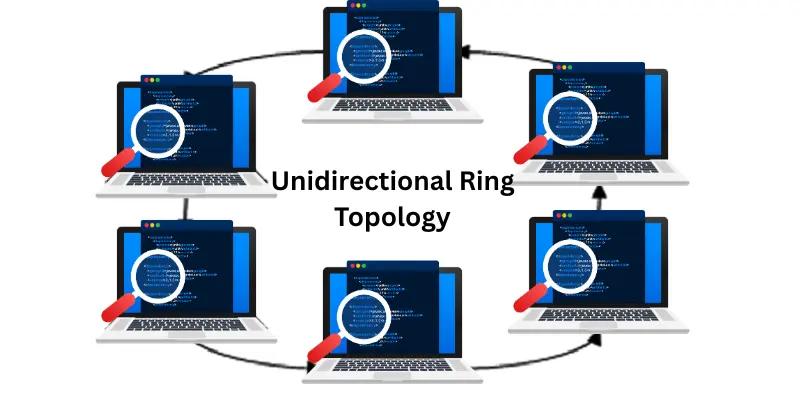
2. Bidirectional Ring Topology
Bidirectional ring topology allows data to flow in both directions. It often uses two paths. Data can travel one way or the opposite way. This adds ring topology reliability. If one path breaks, the other keeps the network running. For instance, a college campus might use this for stable connections. This type is more complex but supports larger networks, like those in telecommunications.
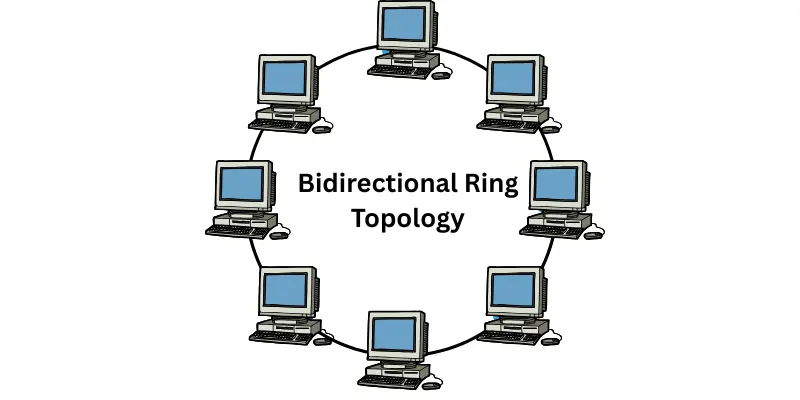
3. Single Ring Topology
Single ring topology uses one loop for data. It is similar to unidirectional ring topology. All devices connect in one circular path. This is cost-effective and simple. A small business might use it to connect five computers. However, a single failure, like a broken ring topology cable, stops the network. This makes it less reliable for critical systems.
4. Dual Ring Topology
Dual ring topology uses two loops. One loop sends data one way, and the other sends it the opposite way. This improves ring topology fault tolerance. If one ring fails, the other takes over. For example, a data center might use dual rings for reliable connections. This type is common in ring topology in fiber optics and supports ring topology in network redundancy.
5. Switched Ring Topology
Switched ring topology uses switches to manage data flow. Switches connect devices in a ring and control traffic. This adds flexibility and improves ring topology scalability. For example, a factory might use this for machine control systems. It is more complex but allows better ring topology in network management. This type suits ring topology in industrial networks.
6. Token Ring Topology
Token ring topology uses a token to control data sending. A device must have the token to send data. This prevents data crashes. Token ring networks, based on ring topology IEEE standards, use this method. For example, an office in the 1980s might have used token ring topology for file sharing. It ensures fair ring topology connectivity but is less common in ring topology in modern networks.
7. Fiber Distributed Data Interface Ring Topology
FDDI ring topology uses fiber optic cables for high-speed data. It is often a dual ring setup. This ensures fast and reliable ring topology data transmission. For instance, a university campus might use FDDI for its network. It supports ring topology in data centers and ring topology in telecommunications. FDDI is part of ring topology history and is known for its ring topology in network reliability.
Each of these types plays a special role in building a strong ring network. The choice depends on how big the system is and how safe or fast it needs to be.
How Ring Topology Works
Ring topology works in a clear and easy way. It follows four main steps. These steps help the network run smoothly and send data between devices in a circle. Now let us look at each step one by one.
- Network Configuration
- Data Transmission
- Token Passing
- Fault Tolerance
Let’s explain each step one by one:
1. Network Configuration
In ring topology, the setup is done in a circular shape. Every device connects to exactly two other devices. One connects to the left and the other to the right. This makes a closed loop. This type of network configuration forms the base of the ring network structure. It is very common in simple and business networks because it does not need many wires. It is also easy to understand and manage.
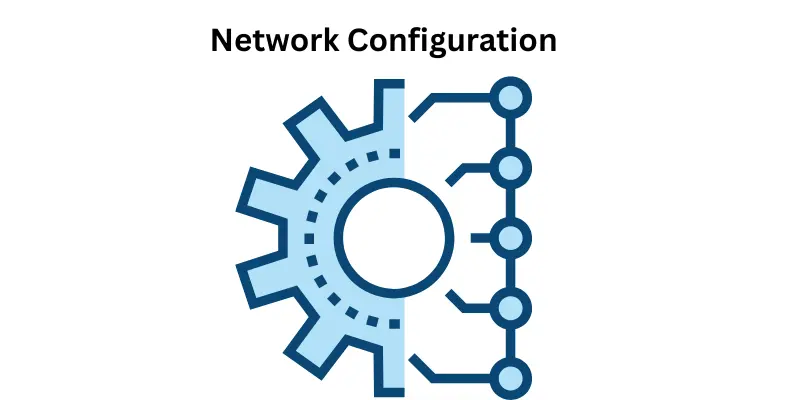
2. Data Transmission
In this step, data moves from one device to another around the ring. This is known as ring topology data flow. The data keeps moving until it finds the correct device. The flow can be one way which is called unidirectional ring topology or both ways which is called bidirectional ring topology. If the flow is both ways, the network becomes more stable and faster.
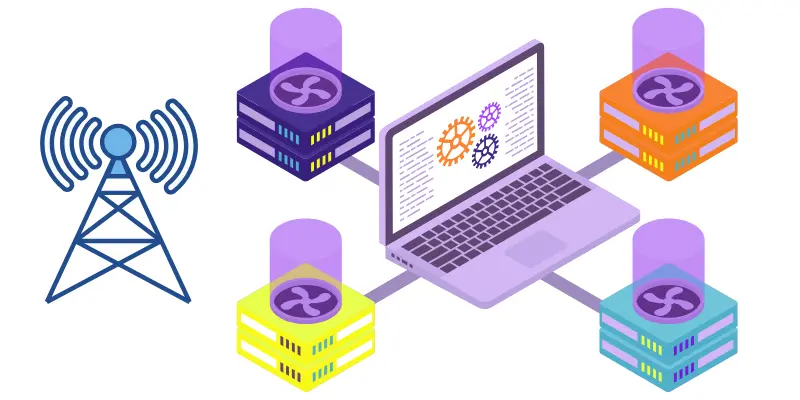
3. Token Passing
Token passing is the main method for sending data in a ring network. A small signal called a token moves from one device to the next. Only the device with the token can send data. This is known as token based ring topology. When one device finishes sending, it passes the token to the next device. This stops devices from sending data at the same time and avoids confusion. It also helps the switched ring topology to run in a neat and organized way.
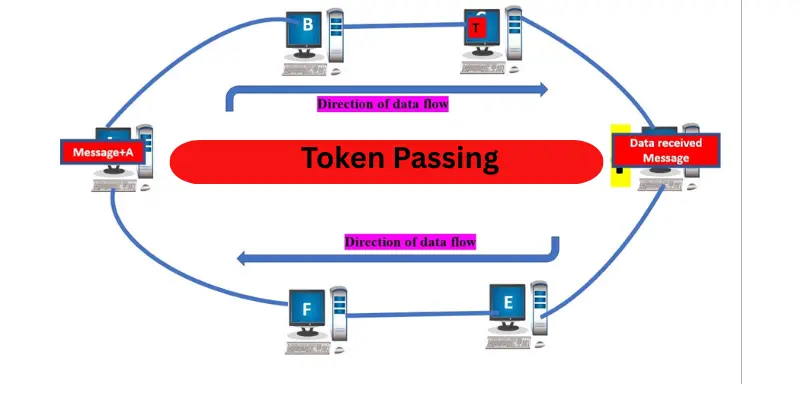
4. Fault Tolerance
When something goes wrong, a good network should still work. This is called fault tolerance. In dual ring topology, there are two loops. If one loop breaks, the data moves in the other loop. This makes the network more secure. In some business places, they use fiber distributed data interface ring topology. These use fiber cables for high speed ring network use. This helps with both speed and strength.
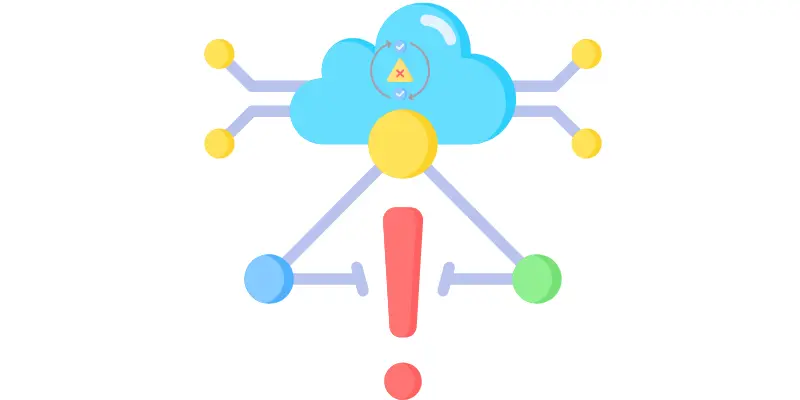
Components of Ring Topology
In ring topology there are many parts that work together to make the network run. Each part plays an important role. These are the basic components used in most ring topology setup types.
- Nodes
- Network Cables
- Network Interface Cards
- Software
- Protocols
- Switches
- Data Flow
- Token
- Repeaters
- Monitoring System
- MAUs
Let’s explain parts of a ring topology:
1. Nodes
There are many devices in the network. These devices are called nodes. Each node is a computer printer or other hardware that sends or receives data. Nodes are placed in a ring shape to make the ring network structure complete.
2. Network Cables
There are network cables that connect all the nodes. These cables carry the data from one device to another. In a fiber distributed data interface ring topology the cables are made from fiber to increase speed and strength.
3. Network Interface Cards
Each device needs a network interface card. This card helps the device talk to the network. It sends and receives signals. Without it the ring topology in networking will not work properly.
4. Software
There is software in each device that manages the data flow. It helps in sending and receiving files and messages across the ring. Software makes it easy to follow the rules of the ring topology setup.
5. Protocols
There are rules called protocols. These protocols make sure that data goes to the correct device. They are also important for managing errors and keeping the network safe.
6. Switches
In some ring networks there are switches. They help direct the data to the right path. In switched ring topology switches are a big part of the system.
7. Data Flow
There is a proper system for data flow. The data moves in one direction or both directions. If it moves in one direction it is called unidirectional ring topology. If it moves in both directions it is called bidirectional ring topology.
8. Token
There is a small control signal called a token. In token based ring topology the token moves from one device to another. Only the device that holds the token can send data. This helps prevent mistakes and confusion.
9. Repeaters
There are repeaters that help boost the signal. When data travels a long distance the signal becomes weak. Repeaters make the signal strong again. This is helpful in high speed ring network use.
10. Monitoring System
There is a system that watches over the network. It is called the monitoring system. It checks if all parts are working. If a part is not working the system will show a message. This helps in keeping the ring topology for business networks working smoothly.
11. MAUs
There are special devices called MAUs. These help connect the devices in a ring. MAUs are used in many types of ring network structures especially in token ring networks.
Ring Topology Diagram
A ring topology diagram shows how computers and devices connect in a circle. It is where each device has two neighbors. One is on its left and the other is on its right. The connection moves from one device to the next until it goes all the way around.
There are small boxes in the diagram that represent computers or nodes. These nodes are linked by lines. These lines show the flow of data from one computer to the next. It is like a loop where data keeps going around until it reaches where it needs to go.
In some cases, there is a token that moves in this ring. This token tells when it is time to send data. Without the token, the devices wait. This makes the network smooth and avoids confusion.
If any part of the ring breaks, the data cannot complete the circle. That is why some networks use two loops instead of one. This gives extra safety and helps the data find another way if one path fails.
The diagram also shows switches and repeaters. These help carry the signal when the distance is long. Repeaters make the signal strong again. Switches help to manage traffic between the devices.
Key Features of Ring Topology
Ring topology is known for its clear structure and smooth data movement. It is a network setup where devices connect in a circular path. Each device links to the next one until the last connects back to the first. This creates a full circle for the data to travel through. Ring topology has many helpful features that make it useful in different network settings.
- Circular Arrangement: It is based on a circular arrangement where each device connects to the one next to it. The data flows in one direction in many cases. That is called unidirectional data flow. In other setups, data can move in both directions. That is called bidirectional data flow. This helps when one path fails and the data still finds its way.
- Predictable Data Flow: There is a predictable data flow because the data always goes through the same path. This makes it easy to manage and troubleshoot.
- Token Passing: There is a method called token passing. It helps the devices take turns sending data. Only the device with the token can send information. This reduces the chance of data collisions.
- Central Hub: There is no central hub in this setup. Each device works as part of the loop. This removes the need for one main control point and makes the network stable.
- Fault Tolerance: There is fault tolerance in some ring networks. If one device stops working, the data may still move in the other direction. This keeps the network working without full failure.
- Signal Regeneration: There is also signal regeneration. This means the data signal is refreshed by each device as it moves along the loop. This helps in keeping the signal strong over long distances.
- Potential for Single Point of Failure: There is a potential for a single point of failure. If the loop breaks and the network has no backup path, the data cannot complete the circle. This can stop communication between devices.
- Easy to Install and Expand: It is easy to install and expand. New devices can be added to the ring without too much trouble.
- Cost-Effective: It is also cost-effective. It uses fewer cables compared to other topologies, and there is no need for expensive hubs.
Characteristics of Ring Topology
Ring topology has some special features that make it different from other network types. It is easy to understand once you know how it works. Here are some characteristics of ring topology included:
- There is one continuous path for data to move through the network.
- Each device has equal access to share and receive information.
- Token-based transmission helps manage data traffic in the ring.
- There is low chance of data collision because devices take turns.
- It is easier to find errors using a monitoring system.
- The layout is simple and forms a circular path.
- There is no need for a central hub or main control device.
- Data always flows in one direction or sometimes both directions.
- Adding or removing devices can affect the whole network.
- Each device helps pass the data to the next one.
- The performance stays steady when few devices are used.
- Network cables are shorter compared to other designs.
- There is a fixed path for every message to follow.
- All devices must be active for the ring to work well.
- The setup cost is low for small networks.
- A broken connection can stop the whole system.
- Repeaters can be used to cover long distances.
- Maintenance is easy when the layout is clearly known.
- Ring topology works well for offices or small buildings.
- The network speed is balanced because of token control.
Uses of Ring Topology
There are many places where ring topology is used because it provides a clear and steady way for data to travel in a loop. Below are common uses where this network structure is helpful.
- There are ring networks used in mobile and landline phone systems.
- It is helpful in internet service providers for smooth data flow.
- There are industrial machines that use it to stay connected all the time.
- It is used in factory automation where machines must work together.
- There are metro area networks using it to link city offices.
- It is good for smart city lights and camera systems.
- There are traffic control systems that use it to stay updated.
- It is helpful in backup networks that keep running when others fail.
- There are school computer labs using it for learning.
- It is easy for students to test network ideas with it.
- There are old legacy networks that still run with this setup.
- It is used in television signal systems for steady broadcasting.
- There are radio stations using it to share clear audio signals.
- It is helpful in fiber distributed data interface systems.
- There are hospital systems that use it for patient records and monitoring.
- It is useful in military networks that must keep working under pressure.
- There are weather stations that use it to send updates across locations.
- It is good for small office networks where cost matters.
- There are research labs that use it for fast and secure data sharing.
- It is used in training centers to teach network building.
- There are bank branches linked with this type of loop network.
- It is used in some airports to connect control rooms and terminals.
- There are security camera systems that use it to stay online.
- It is helpful in water plant systems where each unit sends data.
- There are mining areas using it to connect underground machines.
Difference Between Ring Topology and Star Topology
There are two common types of network structures. One is called ring topology and the other is called star topology. They are different in how they connect devices and move data.
Ring Topology
- Single ring network where data flows in one direction
- Dual ring network where data flows in both directions
- Token ring network that uses a special token to pass data
- Optical ring topology using fiber optics for high-speed data
- Logical ring created using a software system
- Physical ring setup using actual cabling in a circle
- LAN ring topology used inside office buildings
- MAN ring topology used in cities and towns
- WAN ring topology used for large distance networks
- Closed ring network where all nodes must be active
- Open ring network where one node can be disconnected
- Industrial ring network used in factories
- Bus to ring converted network using adapters
- FDDI ring used for faster internet with fiber
- Fault tolerant ring that has a backup path for data
Star Topology
- Basic star network with one hub and several devices
- Extended star topology with extra hubs added
- Centralized star network for big company servers
- Peer to peer star where each device talks through the hub
- Wireless star network using a central wireless router
- Ethernet star setup using switches and cables
- LAN star used in school computer labs
- MAN star used in citywide network setups
- WAN star used for long-distance business networks
- Passive star where the hub does not boost signal
- Active star where the hub boosts data signals
- Virtual star created through software control
- Cloud-based star network with a virtual central server
- Internet café star setup with one main router
- Gaming star network used in online multiplayer setups
Examples of Ring Topology
Ring topology is a type of network layout where each device connects to two other devices. It forms a closed loop. The data moves in one direction or two directions depending on the setup. There are different ways this layout is used in real life. Below are some common and useful examples of ring topology in action.
1. Office Network with Token Ring Setup
There is an office where all computers are linked in a circle. They pass data using a token system. Only one computer can send data at a time. This keeps the network organized. It is called a token ring network.
2. Metropolitan Area Network
There is a city with many buildings connected together. All the buildings are linked in a ring. This setup allows fast and smooth communication between locations. It is called a MAN ring topology.
3. Campus Network with Fiber Optic Ring
In a university campus, buildings are connected with fiber optic cables. They form a ring. The speed is very fast. It helps students and teachers access the internet and share files. This is an optical ring network.
4. Industrial Network for Automation
There are machines in a factory. They are all connected in a ring layout. The data flows in one direction. If one machine fails, the network still works. This is a fault tolerant ring topology.
5. School LAN Network
There is a school computer lab. Each computer connects to two others. It forms a ring shape. Data goes from one to another. This is a LAN ring topology.
6. Wide Area Network for Remote Offices
There are remote offices across different cities. They are connected in a ring. This setup allows them to communicate without delay. This is a WAN ring network.
7. Cable TV Systems
Some cable TV systems use ring networks. Each device passes the signal to the next. The signal travels through the loop. It reaches all homes in the area.
8. Rail Network Communication System
Railway systems use ring layouts for signals and alerts. If one path breaks, the data finds another way. This keeps things safe.
9. Public Safety Communication
In emergencies, police and fire stations use ring networks. The system works even if one point fails. This ensures non-stop communication.
10. Ring Network in Research Labs
Researchers use ring networks to share data between devices. Each device connects to others in a circle. This setup is fast and simple.
Advantages and Disadvantages of Ring Topology
Ring topology is a network type where each device connects to two others in a circle. Data moves from one point to the next until it reaches the right device. It is used in many places like schools and offices because of its simple flow and steady speed.
- There is smooth data flow in one direction
- Token ring network avoids data collision
- Each device shares the network equally
- No need for a central control system
- Optical ring network gives high-speed performance
- It is simple to manage in small setups
- It supports long-distance connection using fiber optic cables
- Ring network layout follows a clear path
- Token passing system gives control
- Less network traffic due to organized data movement
- Devices can be added with planned setup
- It is more stable than bus topology in many cases
- Uses less cable than star topology
- Equal access is given to all devices
- Good for handling large data packets
- Ring topology gives order and structure
- Dual ring structure can increase reliability
- It uses predictable performance for every node
- Can handle moderate user loads well
- Lower cost for small networks
- Node failure in ring topology affects the full ring
- Troubleshooting in ring network is difficult
- One device failure can stop the whole system
- Adding devices in ring topology may cause disruption
- Removing a node breaks the data flow
- Token loss can stop communication
- It needs special software for control
- Difficult to reconfigure once installed
- Speed can drop with more users
- Full ring depends on every single device
- Harder to upgrade than other types
- Limited flexibility compared to star topology
- Maintenance takes time and planning
- Network failure takes time to detect
- It may not support heavy traffic well
- Cost increases with dual ring structure
- Error in one point affects all others
- More delay than mesh network
- Cable fault can affect the entire loop
- It is not suitable for real-time services
Common FAQs about Ring Topology
Ring topology connects each device in a circle where data moves from one to the next. It is simple and often used for learning about computer networks. Many people have questions about how it works and where it is used. Below are the most asked questions with clear answers that help you learn better.
It is used to connect computers or devices in a circle so they can send messages to each other in a loop. It helps in creating a balanced and organized network.
Yes it is still used in some small businesses, school labs, or places where simple network design is needed.
There are features such as equal sharing of data paths, token-based data control, and easy fault checking when problems happen.
Data travels from one point to the next in a circle until it reaches the right spot. It uses a method called token passing to keep things in order.
There are many benefits like clear data flow, no data crash during transfer, and simple structure that is easy to follow.
If a single path breaks in a one-way ring then the network can stop. But if it is a two-way ring then data takes the other path and keeps going.
There are parts like computers or nodes, repeaters, network cables, network interface cards, MAUs, switches, and software that help the system work well.
Yes it can be set up in schools or homes where a few computers need to share data and stay connected in a simple way.
It is good for small groups and offers fair speed and control. While not the fastest or safest today it is still helpful in certain places.
Conclusion
Ring topology is a smart and simple way to connect computers in a loop. It uses token passing and clear network configuration to send data smoothly. There are devices like nodes, switches, and repeaters that help keep the ring working. It is easy to set up in small places like school labs or home offices. Even though it is not the fastest, it gives a strong and steady connection. If you want a network that is easy to understand and manage, ring topology is a good choice.

- Be Respectful
- Stay Relevant
- Stay Positive
- True Feedback
- Encourage Discussion
- Avoid Spamming
- No Fake News
- Don't Copy-Paste
- No Personal Attacks

- Be Respectful
- Stay Relevant
- Stay Positive
- True Feedback
- Encourage Discussion
- Avoid Spamming
- No Fake News
- Don't Copy-Paste
- No Personal Attacks





